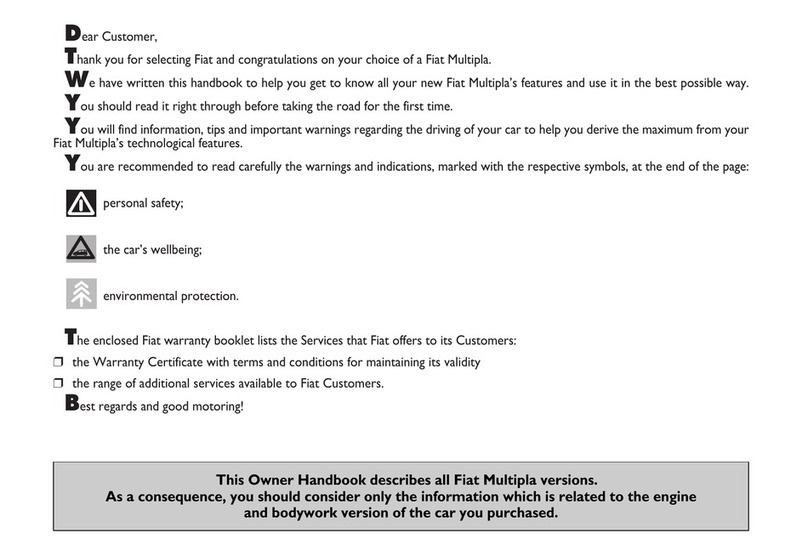
Nuova 500
Technical description
7
2.2 12V battery
The 12V battery in the electric vehicle is a secondary 12V direct-
current battery. This battery provides the energy necessary for
operating the vehicle equipment (headlights, windscreen wipers,
sound system, etc.)
ATTENTION
• If necessary, the 12V battery must be replaced by an equivalent
battery.
• The battery is located in the motor compartment at the front of
the vehicle. Its negative terminal is connected to the metal
chassis for electrical earthing.
• The operations on the battery must be carried out by a qualified
towing operative/mechanic who is qualified to work on the high-
voltage electrical circuit of an electric vehicle.
2.3 Precautions relating to the HV electrical system
Works on HV electrical system
ATTENTION
- The propulsion system of the electric car is connected by the
high-voltage battery and when the system is active the compo-
nents are then powered at high-voltage. Observe the warning
messages on the labels on the car when accessing the motor
compartment. Any intervention or modification on the high-
voltage electrical system of the car (components, cables,
connectors, high-voltage battery) is strictly forbidden due to the
risks it may imply for your safety. In this case, contact a Fiat
Dealership. Tampering with the high-voltage system can lead
to serious burns or electrical discharges with even fatal conse-
quences.Do not resell, give away or modify the high-voltage
battery. The high-voltage battery must only be used on the car
on which it is supplied. If used outside the car or modified,
accidents such as electric shock, heat or smoke generation,
explosion or electrolyte leakage may occur.
- If the car is scrapped without removing the high-voltage battery,
contact with high-voltage components, cables and connectors
could cause very dangerous electric shock.



















































